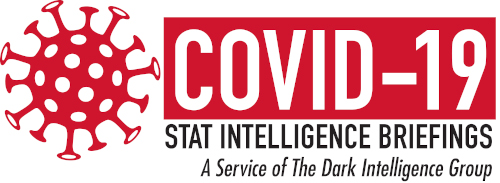Repeat SARS-CoV-2 testing has been an issue that many clinical laboratories and pathology groups have encountered. As a potential lab test utilization issue, misuse of SARS-CoV-2 (COVID-19) PCR testing creates a possible source of waste, expense, and reimbursement risk.
Over the last few months, the rate of SARS-CoV-2 PCR testing has expanded at a dramatic rate across the United States and around the world. Developing and implementing this testing on such a large scale has provided a unique challenge for clinical laboratories, including unprecedented pressure around increasing COVID-19 lab test utilization in clinical situations.
In addition to pressure from Americans at large, medical specialty and patient grouping scenarios have varied. One such example involves universal screening for SARS-CoV-2 in obstetrical patients, presented through a recent letter to the editor of The New England Journal of Medicine (NEJM).
Real-time PCR testing (PCR-based assays detect the viral RNA in clinical samples, designed to diagnose active infection) for SARS-CoV-2 plays a vital role in helping clinicians to understand the infection status of their patients. However, inappropriate utilization of COVID-19 tests can lead to waste of resources and time, and prevent full understanding of a patient’s clinical situation.
Inappropriate lab test utilization of SARS-CoV-2 (COVID-19) PCR testing also has the potential to affect reimbursement if the test is found to be medically unnecessary. Additionally, deliberate misutilization of COVID-19 testing could even have legal implications.
However, most situations where COVID-19 testing is not used correctly are due to a lack of understanding about the correct methods for using this test.
Mayo Clinic Expert Provides Insights for Clinical Labs and Pathology Groups
To learn more about correct SARS-CoV-2 PCR test utilization, the COVID-19 STAT Intelligence Briefings Service interviewed Matthew J. Binnicker, PhD, Director of Clinical Virology for Mayo Clinic. Binnicker’s research focuses on detecting viral pathogens directly from clinical samples and providing results to healthcare professionals in a timely and accurate way. Binnicker also focuses on SARS-CoV-2 testing and appropriate lab test utilization.

Matthew J. Binnicker, PhD, D(ABMM), Professor of Laboratory Medicine and Pathology and Director of Clinical Virology at Mayo Clinic, plays a crucial role in leading the COVID-19 response at Mayo Clinic Laboratories. (Photo used with permission.)
Questioning SARS-CoV-2 Test Utilization
Unpublished data shared with COVID-19 STAT shows that almost 8% of SARS-CoV-2 PCR testing was ordered within three days of a previous test. Binnicker provided guidance on how clinical laboratories and pathology groups should approach repeat testing.
“We’ve seen patients who were ultimately diagnosed with COVID-19 who tested negative by PCR,” Binnicker said. “It doesn’t necessarily mean that the testing is generating false negatives, but what is important is ‘when’ the patient is being tested during the course of their disease and what type of sample is being tested.”
Binnicker went on to explain, “What we know is that early on in a patient’s disease course with COVID, the virus is at high amounts in the upper respiratory tract. One study showed that the virus is present at peak levels the day before a patient develops symptoms, then over the next week, the amount of virus in the upper respiratory track declines.”
If repeat testing is being considered for a patient who tested negative after a nasopharyngeal swab, Binnicker recommends that providers consider samples like sputum or bronchoalveolar lavage fluid to rule out the presence of SARS-CoV-2 in the lower respiratory tract. It is important for clinical labs to understand the potential causes of negative PCR results in patients who seem to have COVID-19 so they can guide clinicians in retesting responsibly. This may avoid waste and unnecessary use of resources.
Another utilization issue that Binnicker addressed is the use of PCR as a screening tool for managing the spread of COVID-19. “PCR is definitely one diagnostic tool, but unfortunately, we don’t have a single laboratory approach that can be used to eliminate risk. We can’t take an approach where we test someone by PCR and say that they’re safe. Someone may not have enough virus initially to test positive, but could have a significant amount of virus a week later,” Binnicker said. “We can’t just perform testing at one point in time then consider someone good to go. We have to think about more routine or scheduled testing because individuals can go from noninfectious to infectious over a period of days or weeks.”
Clinical laboratories and pathology groups should consider the potential need for routine or scheduled testing when partnering to perform PCR-based COVID-19 screening, Binnicker said. Furthermore, he explained that labs will need to start considering COVID-19, along with other viral infections in patients with respiratory symptoms.
“In the coming months, appropriate test utilization will depend on what time of year it is. During influenza season, it will be important for us to test for both influenza and COVID on most patients, because the symptoms are so similar,” Binnicker said. While influenza season has recently concluded in the United States, clinical laboratories in the southern hemisphere may need to consider performing influenza testing and COVID-19 testing together for symptomatic patients.
Binnicker also recommended ruling out COVID-19 before performing a respiratory pathogen panel (RPP) unless the patient is immunosuppressed, severely ill, or hospitalized. “In most otherwise healthy individuals, we generally take a more tiered strategy, starting with a more targeted test and then moving toward broadening out the testing,” Binnicker said. “It’s dependent on the patient, too, what type of testing strategy you take. In those individuals who are really sick, you could considering starting with a broad respiratory panel.”
SARS-CoV-2 testing is one of hundreds of lab tests that are being scrutinized for appropriateness, by both healthcare professionals and payers. By utilizing SARS-CoV-2 PCR testing appropriately for different patient groups, clinical laboratorians and pathologists can help providers to better understand how to treat the patient, avoid potential waste of resources, and ensure proper payment.

—By Caleb Williams, Editor, COVID-19 STAT






